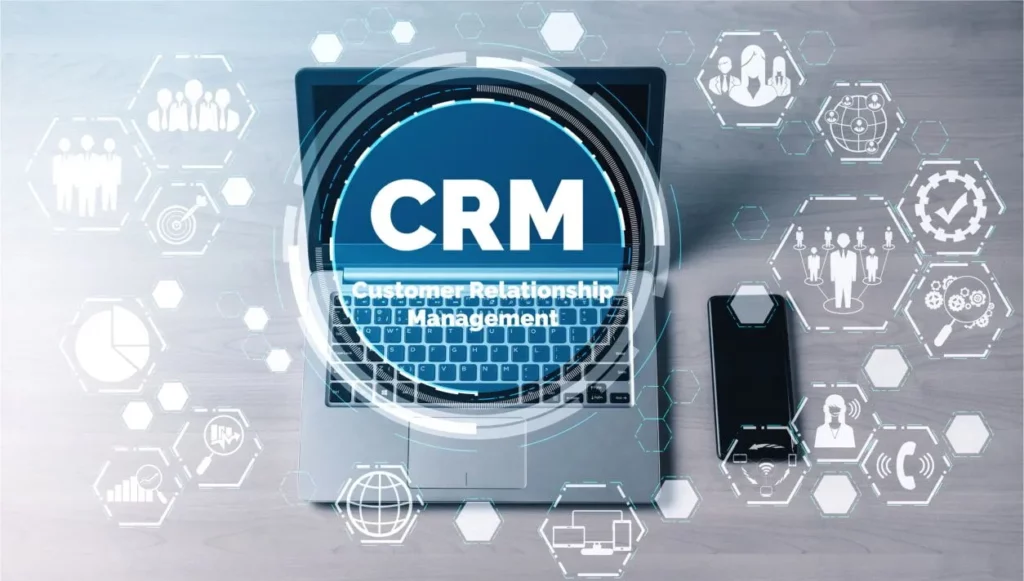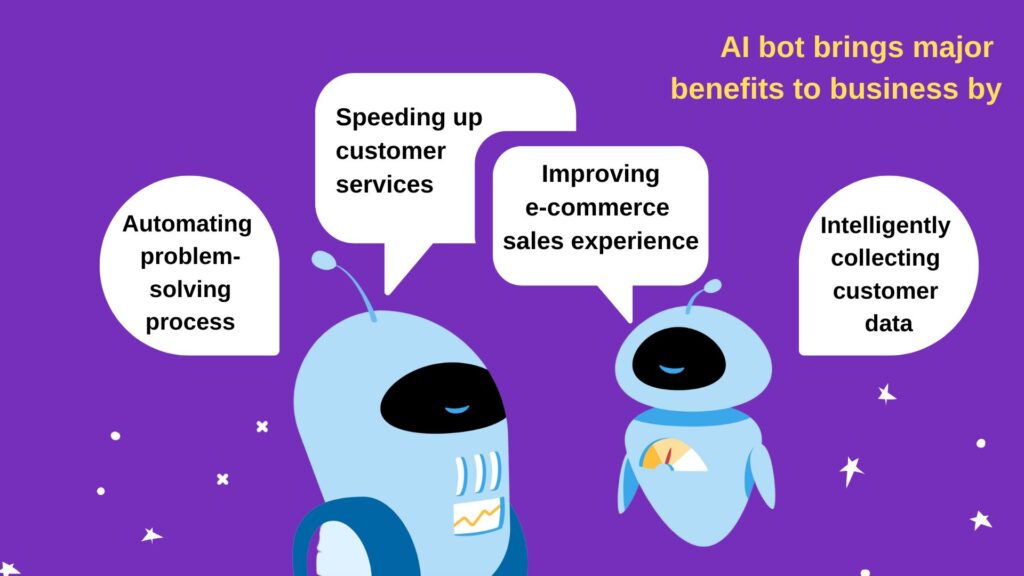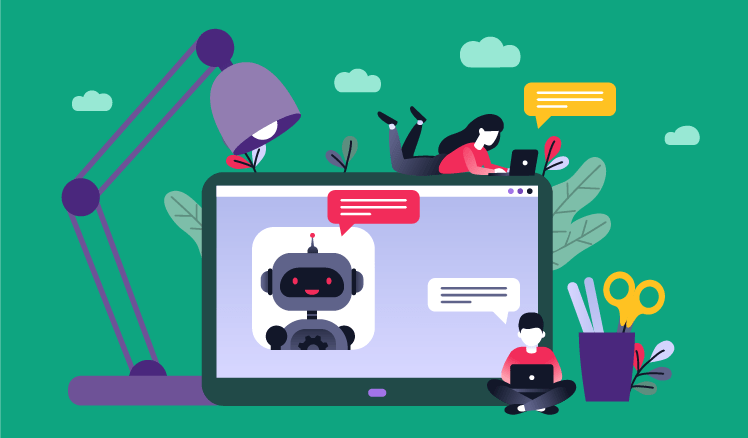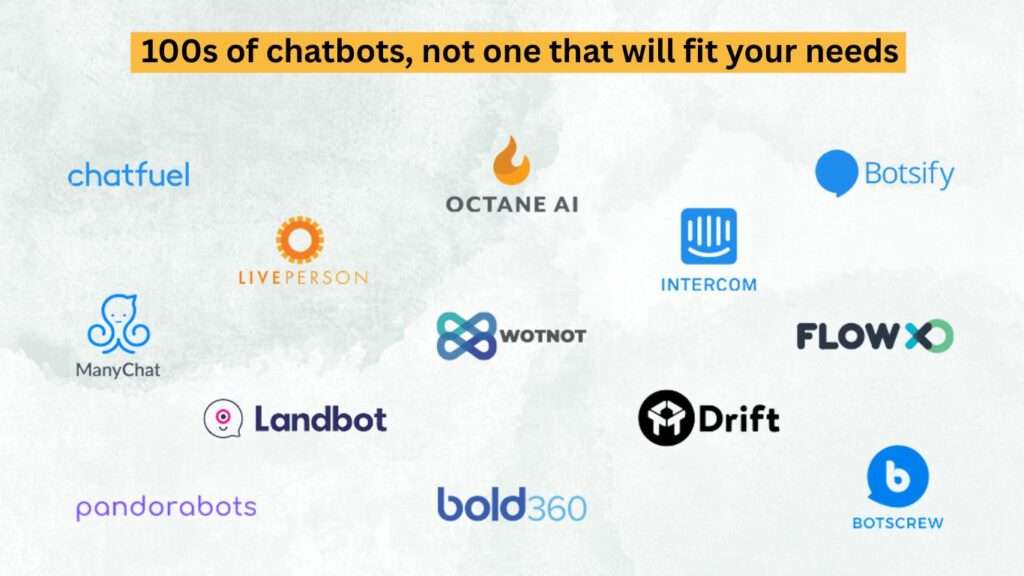From heightened customer satisfaction to streamlined operations, delve into the ultimate guide, through the integration of Chatbots with CRM systems.

In the ever-evolving landscape of business, where time is money and innovation is the key to success, the marriage of chatbots and Customer Relationship Management (CRM) systems emerges as a strategic imperative. These two distinct entities, when seamlessly integrated, pave the way for enhanced customer satisfaction, increased sales productivity, and overall turbocharged business growth. Join us on a journey to explore the multifaceted benefits of bringing together the power of chatbots and CRM systems.
Unleashing the Power: Chatbots and CRM
In the realm of business operations, both chatbots and CRM systems play pivotal roles. Chatbots, with their ability to provide real-time information, answer queries, and perform recurring tasks, are virtual workhorses capable of handling a myriad of activities. On the other hand, CRM systems are the backbone of customer-centric operations, helping businesses manage relationships, streamline processes, and drive revenue growth.
However, despite their individual prowess, chatbots and CRM systems often operate in silos, with businesses overlooking the potential synergies that can arise from their integration. The result? Missed opportunities for enhanced communication, streamlined processes, and a seamless flow of information between the front-end customer interactions and back-end data management.
Book a Demo Now!
The integration of chatbots with CRM systems isn’t just a technological fusion; it’s a strategic move that pays dividends in customer satisfaction, sales productivity, and data quality. Before delving into the myriad benefits, let’s understand why this integration is crucial in the first place.
Why CRM Integration with Chatbots?
Businesses today operate in a highly competitive environment, and meeting customer expectations is paramount for success. The benefits that your business can reap by integrating your CRM system with a chatbot are countless. The primary benefits you get to gain are:
1. Improve Customer Satisfaction
The primary benefit of a chatbot-CRM integration is that it can enable seamless and consistent communication with customers across multiple channels, namely web, mobile, email, social media, etc. The integration allows the chatbot to access and update the customer data stored in the CRM system seamlessly, in turn saving significant effort for the human workers.
Using this data, relevant and customized responses can be provided to meet customers’ needs and expectations. Further, if the need arises, the chatbot can also transfer the conversation to a human agent, along with a complete transfer of the conversation context or history.
2. Increase Sales Productivity
From attracting prospects to closing deals, streamlining and optimizing the sales funnel is a tough nut to crack for every sales leader. Updating data on the CRM is also routine work that hampers sales productivity significantly.
If you integrate the CRM system with a chatbot, it can leverage its natural language processing and artificial intelligence capabilities. The chatbot can then capture, record, and qualify leads.
Further, you can also train the chatbot to ask relevant questions, collect contact details, verify information, score leads, and assign them to the appropriate sales reps. Additionally, you can also train chatbots to access and update the lead data stored in the CRM system. This will ensure that the sales reps have the latest and most accurate information.
3. Enhance Data Quality
According to Gartner, poor data quality can cost businesses an average of $15 million per year. Data quality is critical for any business and for CRM success. Poor data quality impacts the reliability and usability of customer information, gives inaccurate business insights, and skewed sales reports. Poor data quality leads to inaccurate customer segmentation, ineffective marketing campaigns, missed sales opportunities, and diminished customer satisfaction.
However, integrating a chatbot with your CRM system can negate these issues. It can enhance data quality by eliminating human errors and inconsistencies in data entry and validation. Instead of asking sales reps to fill out forms, you can deploy chatbots to ask questions, verify information, detect anomalies, and correct mistakes. This helps in feeding real-time reliable data into the CRM system and enhancing data quality.

Challenges of Chatbot Integration with CRM
While the benefits are evident, integrating chatbots with CRM systems comes with its set of challenges that businesses must navigate to unlock the full potential of this dynamic duo. The most obvious challenges include:
1. Tackling Technical Complexity
Chatbot-CRM integration demands a high level of technical expertise such as programming skills, knowledge of working with APIs, implementing security protocols, and so on. Also, APIs – that is the interfaces used to communicate with the CRM system could vary in terms of functionality, complexity, and documentation, depending on the chatbot and CRM platforms. This makes the task of chatbot-CRM integration even more difficult.
2. Handling Ethical Concerns
Since day one, the use of chatbots has raised ethical concerns such as privacy, transparency, consent, accountability, etc. We know for a fact that chatbots collect and use customer data for various purposes, such as providing information, offering guidance, performing tasks, generating insights, etc.
This creates privacy concerns such as:
- Customers may be unaware of how their data is collected, stored, processed, shared
- They may not have direct information about the business that owns their data.
- They may not have control over their data or the ability to opt out of data collection or personal data deletion in the future.
- Customers may also not know how to hold the chatbot accountable for actions or errors.
Further, if the chatbot is trained using biased datasets, the results it provides could be skewed or even biased. Negating these ethical concerns is one of the roadblocks in implementing a chatbot-CRM integration.
Best Practices for Chatbot Integration with CRM
While challenges exist, they are not dead-ends that should stop your business. There are best practices that you can follow that can help get past the challenges effortlessly. These best practices include:
1. Choosing the right chatbot platform
Choosing the right chatbot platform that can meet your needs and goals is the obvious best practice that should take precedence above everything else. Chatbots are of different types: rule-based or AI-based, that can vary in their capabilities and functionalities.
Rule-based chatbots follow predefined scripts and rules that they are trained and programmed on. AI-based chatbots rely on natural language processing and machine learning to understand and generate natural and human-like responses.
Depending on your use case, you may need a chatbot that can handle simple FAQs or complex conversations, provide information or guidance, perform tasks or transactions, etc.
There are other factors to consider in choosing the right chatbot platform:
a. Features and functionalities
Chatbots are capable of natural language processing, sentiment analysis, voice recognition, image recognition, etc. which can enhance the chatbot’s performance and user experience.
b. Availability of integrations
The chatbot platform must provide integrations with all popular CRM systems. For example, Beyond Chats is a customer service platform that allows you to create and deploy AI-powered chatbots on your website or app. It also offers a native integration with Salesforce CRM that allows you to sync your customer data and conversations between the chatbot and the CRM system.
2. Designing the chatbot user experience
A well-designed chatbot user experience can enhance customer engagement, satisfaction, and loyalty. It would most probably be the first line of communication for the customer and hence the chatbot’s user experience must match the brand identity and customer expectations.
For example, the chatbot should have a consistent and appropriate tone of voice, personality, and appearance that reflects the brand values and message. The chatbot should also suit the target audience and use case, such as formal or casual, friendly or professional, avatar or text, etc.
3. Testing and monitoring the chatbot performance
Chatbot performance refers to how well the chatbot can communicate with customers and CRM systems, and how it can achieve the desired goals and outcomes. Continuous testing and monitoring of the chatbot’s performance will give visibility into how the business is serving its customers. It will also show how the chatbot is helping the stakeholders, and the ROI it is yielding.
You can use analytical tools, feedback surveys, and user testing to test and monitor chatbot performance. Additionally, you can also optimize the chatbot’s voice and tone to make it sound more cordial, friendly, and interesting to users.

Wrapping up
Chatbot-CRM integrations can help your business fast-track how communication happens with customers and prospects. It will also ease everyday work for sales reps and enable them to cater to business needs with agility.
In conclusion, while the road to chatbot-CRM integration may be paved with challenges, the destination is well worth the journey. Businesses that overcome these challenges stand to unlock a realm of possibilities, from seamless communication to enhanced productivity and data accuracy. Embrace the future, integrate chatbots with CRM, and fast-track your business’s journey to success!
For more such amazing content follow us here!




